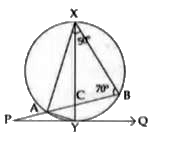Let A(3,2), B(4, 1),C(3,1), and D(2, 4) be the vertices of a quadrilateral ABCD. Find the area of the quadrilateral formed by joining the midpoints of the sides of the quadrilateral ABCD. Solution in Kannada
The correct Answer is:105 sq.units
Step by step video, text & image solution for Let A(3,2), B(4, 1),C(3,1), and D(2, 4) be the vertices of a quadrilateral ABCD. Find the area of the quadrilateral formed by joining the midpoints of the sides of the quadrilateral ABCD. by Maths experts to help you in doubts & scoring excellent marks in Class 10 exams.
Updated on:21/07/2023Topper's Solved these Questions
- CO-ORDINATE GEOMETRYBOOK - ZEN PUBLICATIONCHAPTER - CO-ORDINATE GEOMETRYEXERCISE - ZEN ADDITIONAL QUESTIONS - LONG ANSWER [LA] TYPE QUESTIONS
6 Videos
- CIRCLESBOOK - ZEN PUBLICATIONCHAPTER - CIRCLESEXERCISE - ZEN ADDITIONAL QUESTIONS ( HOT [HIGHER ORDER THINKING SKILLS] - QUESTIONS) (IIT AND IMO)
9 Videos
- CONSTRUCTIONSBOOK - ZEN PUBLICATIONCHAPTER - CONSTRUCTIONSEXERCISE - ZEN ADDITIONAL QUESTIONS ( HOTS [HIGHER ORDER THINKING SKILLS] - QUESTIONS) IIT /OLYMPIAD/ IMO
5 Videos
Similar Questions
The vertices of AABC are A(4, 6), B(1, 5), and C7, 2). A line is drawn to intersect sides AB and AC at D and E respectively. Show that ADAB=AEAC=14. Find the area of Δ ADE and compare it with Δ ABC.
View SolutionIn the adjoining figure, XY is a diameter of the circle and PQ is a tangent to the circle at Y. Given that ⌊AXB=50∘ and ⌊ABX=70∘, calculate ⌊BAY and ⌊APY.

View SolutionGiven below are the steps of construction of a pair of tangents to a circle of radius 4 cm from a point on the concentric circle of radius 6 cm. Find which of the following steps is wrong.
(P) Step 1: Take a point O on the plane paper and draw a circle of radius OA = 4 cm. Also draw a concentric circle of radius OB = 6 cm.
(Q) Step 2: Find the midpoint C of OB and draw a circle of radius BA= AO. Suppose this circle intersects the circle of radius 4 cm at P and Q.
(R) Step 3: Join BP and BQ to get the desired tangents.
View SolutionIf A(−5, 7), B(−4, −5), C(−1, −6) and D(4, 5)are the vertices of a quadrilateral, find the area of the quadrilateral ABCD.
View SolutionLet A(3,2),B(3,2),B(-4,1),C(3,1) and D(2,-4) be the vertices of a quadrilateral ABCD CD Find area of the quadrilateral formed by the mid-points of the sides of quadrilatdateral
View Solutionयदि A(-5,7), B(-4,-5), C(-1, -6) और D(4,5) एक चतुर्भुर्ज ABCD के शीर्ष हैं, तो इस चतुर्भुर्ज का क्षेत्रफल ज्ञात कीजिए |
View Solutionयदि A(−5,7),B(−4,−5),C(−1,−6) और −D(4,5)एक चतुर्भुज ABCD के शीर्ष बिन्दु है तो चतुर्भुज ABCD का क्षेत्रफल ज्ञात कीजिए ।
View SolutionThe quadrilateral formed by joining the midpoints of the sides of a quadrilateral ABCD, taken in order, is a rectangle, if
View SolutionThe quadrilateral formed by joining the midpoints of the sides of a quadrilateral ABCD, taken in order, is a rhombus, if
View Solutionयदि A(-5,7), B(-4,-5), C(-1,-6), और D(4,5) एक चतुर्भुज ABCD के शीर्ष हैं, तो इस चतुर्भुज का क्षेत्रफल ज्ञात कीजिये।
View SolutionIf A(-5, 7), B(-4,-5), C(-1, -6) and D(4,5) are the vertices of a quadrilateral, then, find the area of the quadrilateral ABCD.
View SolutionIf A(-5, 7), B(-4,-5), C(-1, -6) and D(4,5) are the vertices of a quadrilateral, then, find the area of the quadrilateral ABCD.
View SolutionIf A(−5, 7), B(−4, −5), C(−1, −6) and D(4, 5)are the vertices of a quadrilateral, find the area of the quadrilateral ABCD.
View SolutionLet A(3,2),B(−4,1),C(−3,1) and D(2,−4) be the vertices of a quadrilateral ABCD CD Find area of the quadrilateral formed by the mid-points of the sides of quadrilatdateral
View SolutionIf A(5,7),B(−4,−5),C(−1,−6)andD(4,5) are the vertices of a quadrilateral, find the area of the quadrilateral ABCD.
View Solution
